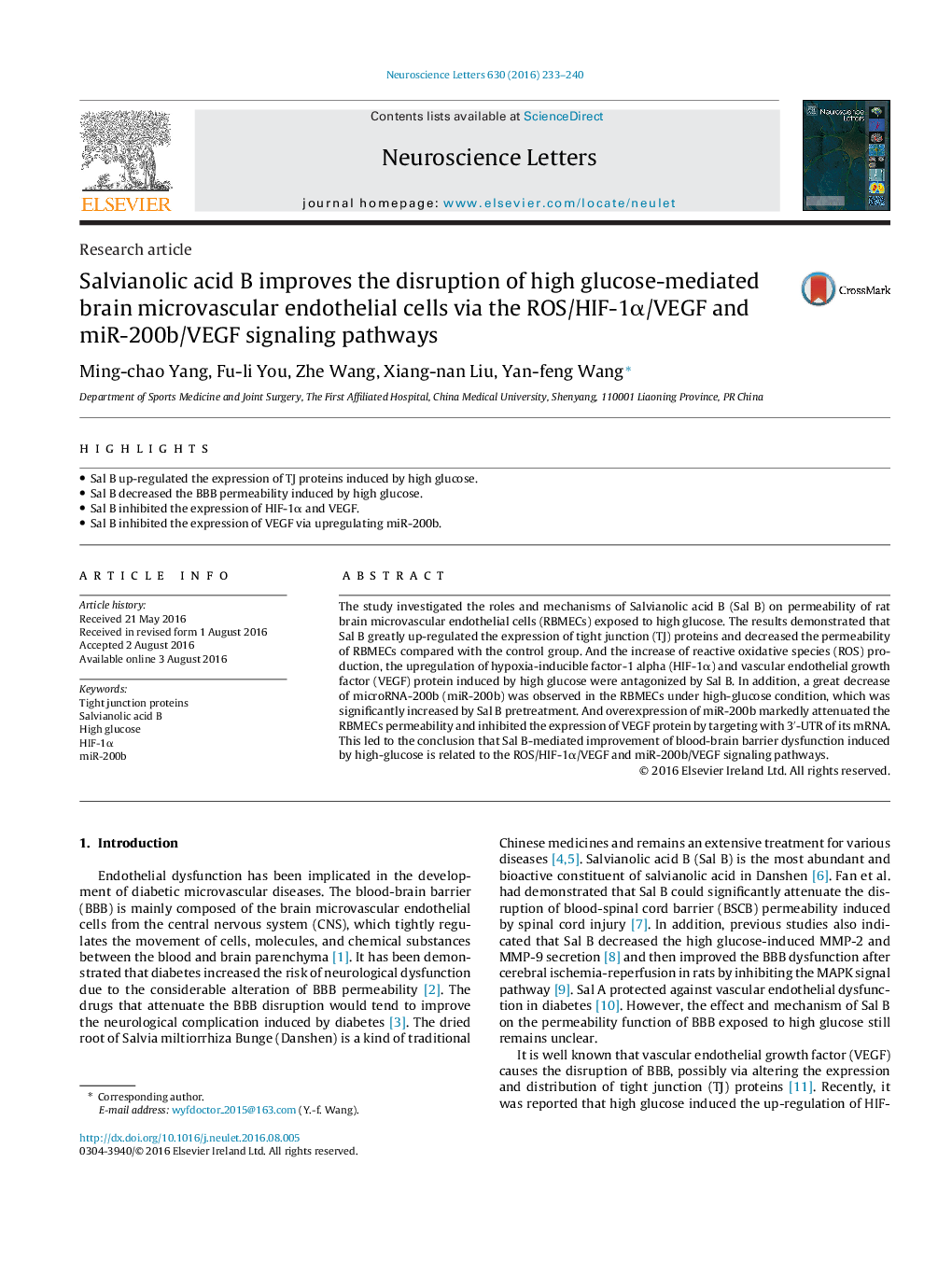| کد مقاله | کد نشریه | سال انتشار | مقاله انگلیسی | نسخه تمام متن |
|---|---|---|---|---|
| 6279218 | 1615069 | 2016 | 8 صفحه PDF | دانلود رایگان |
عنوان انگلیسی مقاله ISI
Salvianolic acid B improves the disruption of high glucose-mediated brain microvascular endothelial cells via the ROS/HIF-1α/VEGF and miR-200b/VEGF signaling pathways
دانلود مقاله + سفارش ترجمه
دانلود مقاله ISI انگلیسی
رایگان برای ایرانیان
کلمات کلیدی
موضوعات مرتبط
علوم زیستی و بیوفناوری
علم عصب شناسی
علوم اعصاب (عمومی)
پیش نمایش صفحه اول مقاله

چکیده انگلیسی
The study investigated the roles and mechanisms of Salvianolic acid B (Sal B) on permeability of rat brain microvascular endothelial cells (RBMECs) exposed to high glucose. The results demonstrated that Sal B greatly up-regulated the expression of tight junction (TJ) proteins and decreased the permeability of RBMECs compared with the control group. And the increase of reactive oxidative species (ROS) production, the upregulation of hypoxia-inducible factor-1 alpha (HIF-1α) and vascular endothelial growth factor (VEGF) protein induced by high glucose were antagonized by Sal B. In addition, a great decrease of microRNA-200b (miR-200b) was observed in the RBMECs under high-glucose condition, which was significantly increased by Sal B pretreatment. And overexpression of miR-200b markedly attenuated the RBMECs permeability and inhibited the expression of VEGF protein by targeting with 3â²-UTR of its mRNA. This led to the conclusion that Sal B-mediated improvement of blood-brain barrier dysfunction induced by high-glucose is related to the ROS/HIF-1α/VEGF and miR-200b/VEGF signaling pathways.
ناشر
Database: Elsevier - ScienceDirect (ساینس دایرکت)
Journal: Neuroscience Letters - Volume 630, 6 September 2016, Pages 233-240
Journal: Neuroscience Letters - Volume 630, 6 September 2016, Pages 233-240
نویسندگان
Ming-chao Yang, Fu-li You, Zhe Wang, Xiang-nan Liu, Yan-feng Wang,